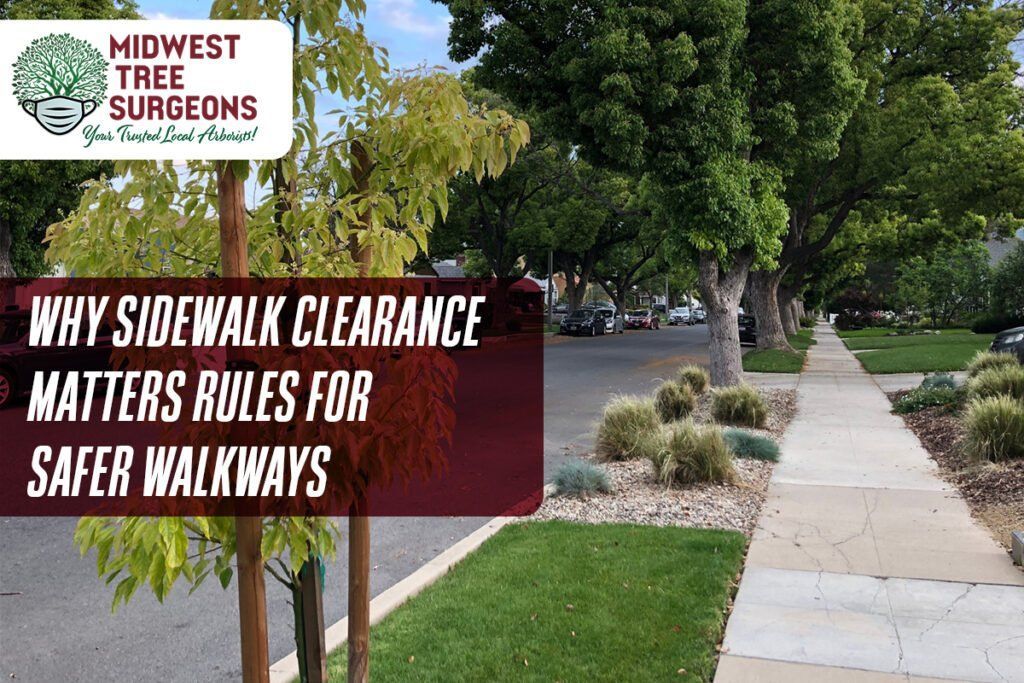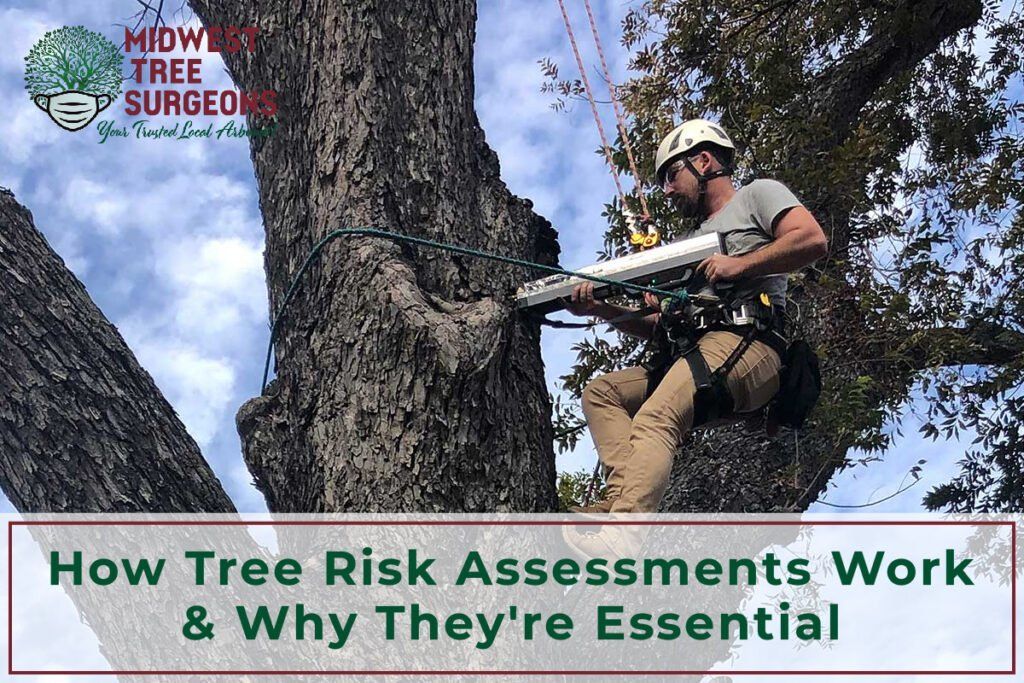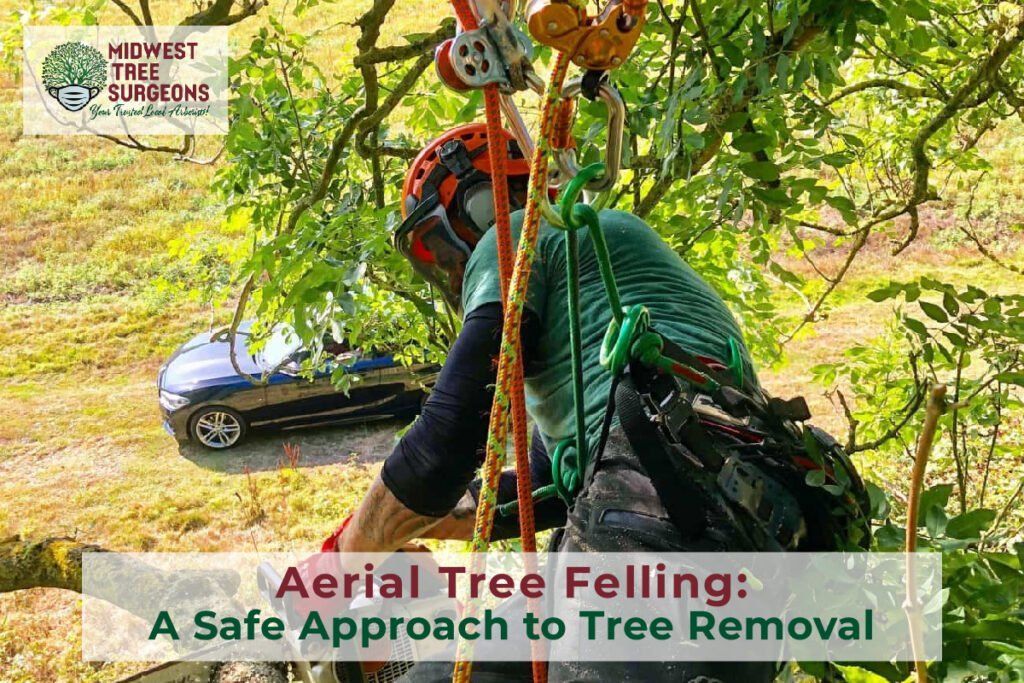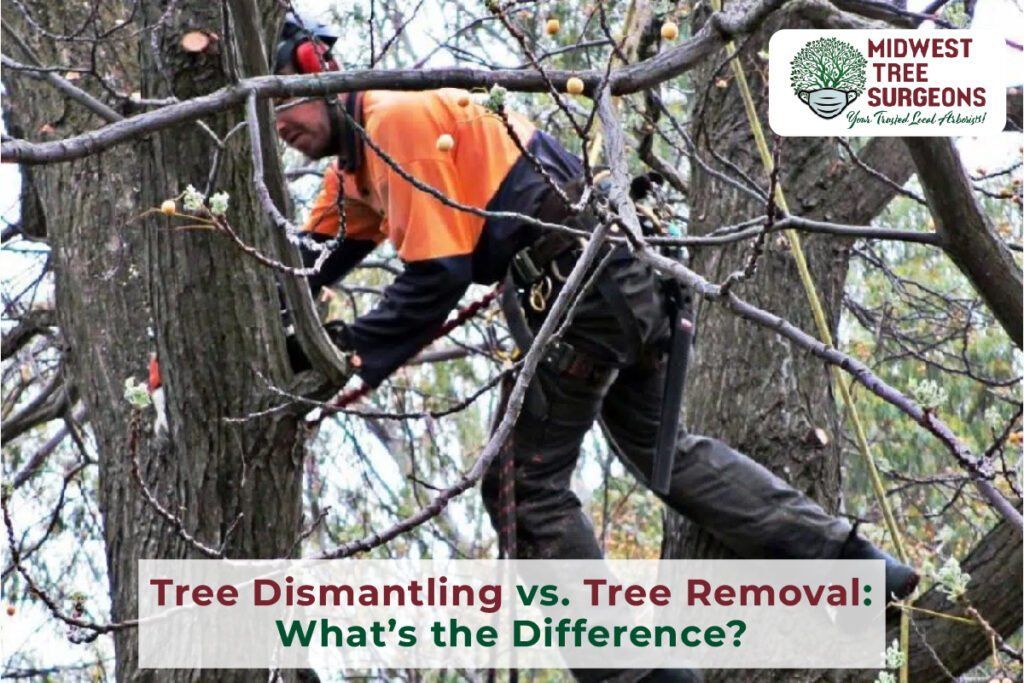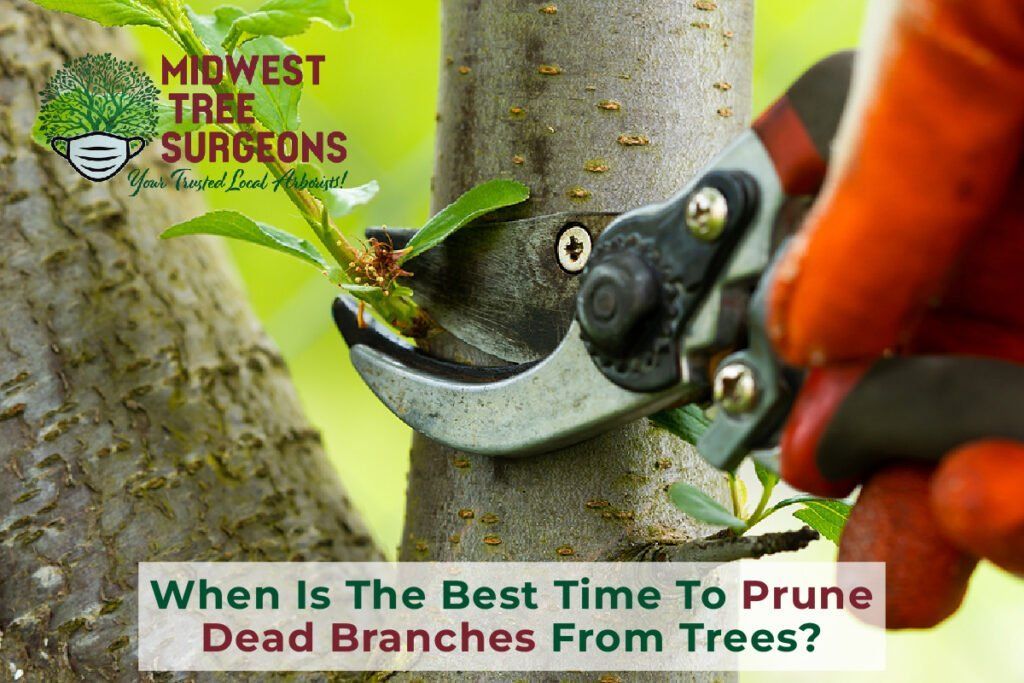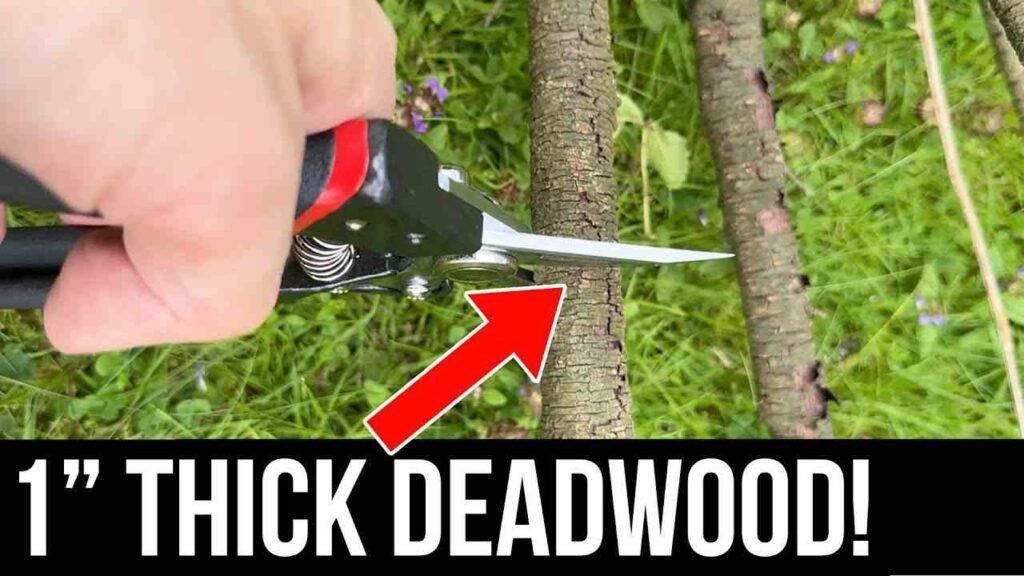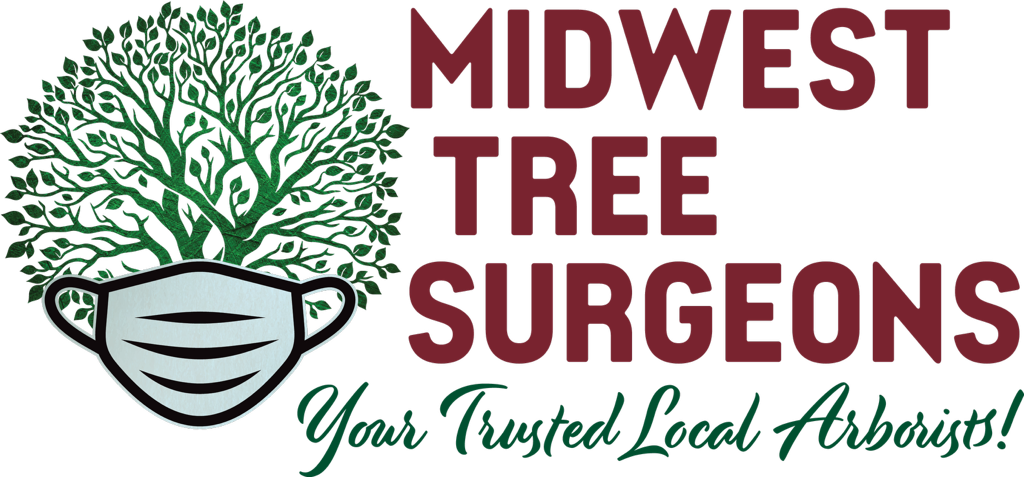Effects of canopy reduction on the overall tree health
When it comes to tree care, pruning techniques like canopy reduction can have a significant impact on the overall health of a tree. While many people think of pruning as simply cutting back branches, the effects go far beyond just shaping a tree’s appearance. But what does this process do for the tree itself? Properly performed canopy reduction can improve a tree’s health by enhancing airflow, increasing sunlight exposure, and relieving structural stress. In this guide and along with the helping hand of Midwest Tree Surgeons , we will explore the various effects of canopy reduction on tree health, from boosting structural integrity to reducing disease risks. Understanding how this technique influences a tree’s well-being helps ensure proper maintenance and promotes a healthy, thriving landscape for years to come.
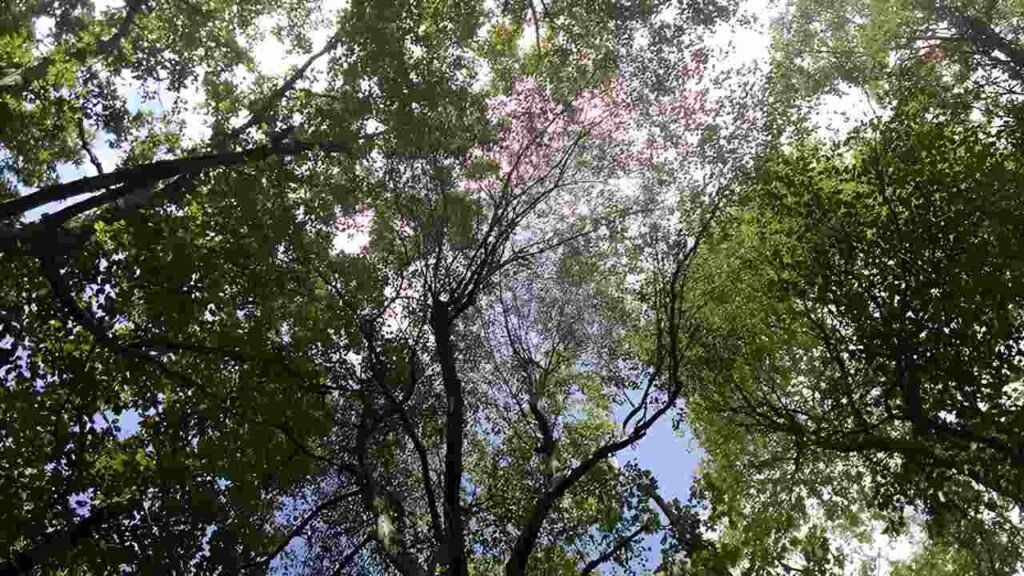
Canopy reduction services involve reducing the size and spread of the tree’s upper structure, which can benefit trees growing too close to buildings, power lines, or other structures. By carefully cutting back specific branches, these services help manage tree growth without compromising its overall health. Canopy reduction services also minimize potential hazards, such as falling limbs, while improving the tree’s stability and appearance.
What Is Canopy Reduction?
Canopy reduction is a tree pruning technique designed to reduce the size and spread of a tree’s upper structure. It focuses on cutting back large limbs and branches to manage the overall shape and size of the tree without compromising its health. Unlike topping, which can be harmful, canopy reduction involves strategic cuts that preserve the tree’s natural form and growth pattern. This method helps improve tree stability, reduce the risk of branch failure, and allows better management of large trees growing in confined spaces. It is often performed to prevent interference with buildings, power lines, or other structures, making it a crucial technique for tree safety and maintenance in both urban and suburban areas.
The Importance of Canopy Reduction for Urban Trees
Urban environments present unique challenges for trees, including limited space and exposure to structures like buildings and power lines. Canopy reduction is essential in these settings to prevent tree limbs from becoming hazards. By reducing the size of the upper structure, this technique minimizes the risk of falling branches that could damage property or harm people. Additionally, canopy reduction helps trees thrive in constrained spaces by improving air circulation and light penetration, which are critical for healthy growth. Properly managed tree canopies also contribute to the overall aesthetic appeal of urban landscapes, making streets and parks more attractive while maintaining safety and environmental balance.
Key Benefits of Canopy Reduction Services
Canopy reduction services offer a wide range of benefits for both trees and property owners. One of the primary advantages is improved safety, as it minimizes the risk of falling branches that can cause damage or injury. It also helps manage tree growth in limited spaces, keeping trees from interfering with buildings, power lines, and other structures. Specific trees that benefit more from canopy reduction include fast-growing species or those with large canopies, such as oaks, maples, and willows, which tend to overgrow and create hazards. Another benefit is enhanced tree health, as reducing the canopy improves sunlight exposure and airflow, promoting healthy growth.
Canopy Reduction vs. Other Pruning Techniques
Canopy reduction differs significantly from other pruning methods like crown thinning or crown raising. While canopy reduction focuses on decreasing the overall size of the tree’s canopy, crown thinning involves selectively removing branches to improve airflow and light penetration without altering the tree’s size. Crown raising, on the other hand, lifts the tree’s lower limbs to create clearance beneath it. Unlike topping, which cuts off the top of the tree and can lead to severe damage, canopy reduction uses strategic cuts that preserve the tree’s natural shape. Understanding these differences is important to ensure the correct pruning method is applied for specific tree management goals.
Common Situations Requiring Canopy Reduction Services
Certain situations make canopy reduction services necessary to ensure tree safety and health. Trees growing too close to buildings, power lines, or roads often require canopy reduction to prevent property damage and maintain safety. Trees with large, overextended limbs that pose a risk of breaking during storms also benefit from this service. Additionally, trees in confined spaces with limited root support may need canopy reduction to balance their structure and prevent uprooting. In some cases, trees blocking sunlight or obstructing views can be managed with this technique. Canopy reduction is an effective solution for managing growth while preserving the tree’s health and beauty.
How Canopy Reduction Improves Tree Safety
One of the most significant advantages of canopy reduction is the improved safety it provides for both people and property. By strategically cutting back large branches, it reduces the risk of limbs breaking and falling during storms or high winds. This is particularly important for trees near homes, roads, or power lines, where falling branches can cause significant damage. Canopy reduction also helps balance the tree’s weight, preventing the entire tree from becoming unstable. Regular pruning and canopy management help maintain a safe environment while ensuring the tree remains strong and healthy, contributing to long-term safety and structural integrity.
Impact of Canopy Reduction on Tree Growth and Health
Properly executed canopy reduction has a positive impact on a tree’s overall growth and health. By reducing the size and weight of the canopy, it alleviates stress on the trunk and roots, allowing the tree to allocate more resources to healthy growth. Improved airflow and sunlight exposure from thinning out the canopy promote better photosynthesis and reduce the risk of fungal infections and pests. However, over-pruning can be harmful, leading to reduced vitality. Therefore, it’s essential to have canopy reduction performed by trained professionals who understand tree biology and apply the correct pruning methods to support long-term health.
Tools and Techniques Used in Canopy Reduction
Canopy reduction requires specialized tools and techniques to be effective and safe. Arborists use pruning shears, loppers, and hand saws for smaller branches, while chainsaws may be needed for larger limbs. Proper safety gear, including helmets, harnesses, and climbing ropes, ensures the safety of workers during the process. Techniques like making clean cuts at branch collars help promote healing and prevent disease. Arborists also follow the rule of removing no more than one-third of the tree’s canopy at a time to avoid shock. Advanced methods, including aerial lifts or rope access, may be used for taller trees to ensure precision and safety.
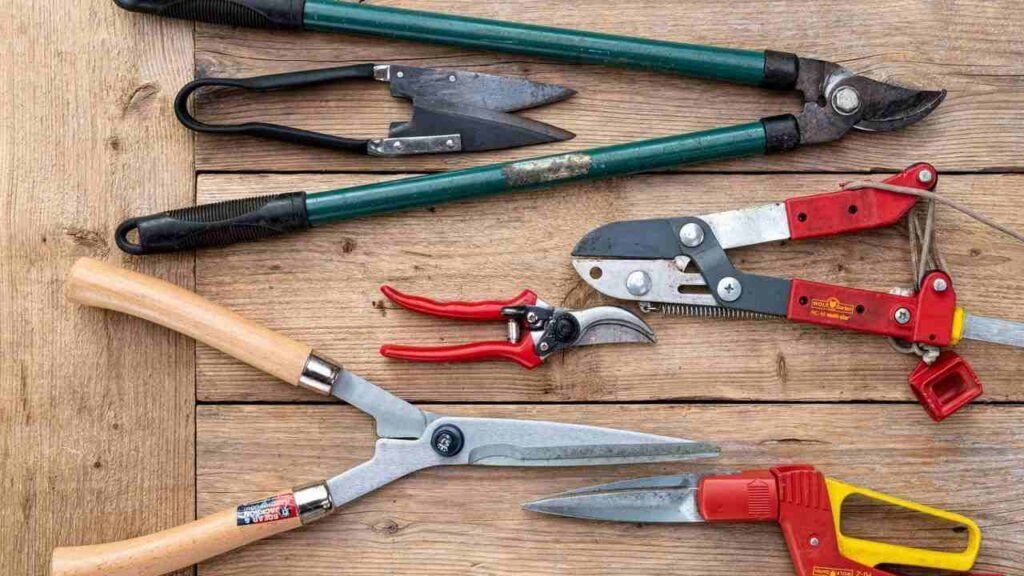
Best Practices for Effective Canopy Reduction
To achieve the best results, canopy reduction should be guided by best practices that prioritize tree health and structural integrity. First, it’s important to assess the tree’s overall condition and identify which branches need pruning. Strategic cuts should be made near the branch collar to encourage proper healing and minimize damage. Avoid removing more than 25-30% of the canopy in a single session to prevent stress. Timing is also crucial—dormant seasons are ideal for most tree species. Hiring experienced arborists ensures that these practices are followed, protecting both the tree’s health and the safety of the surrounding environment.
Hiring Professional Canopy Reduction Services
Hiring professional canopy reduction services ensures that the pruning process is done safely and effectively. Certified arborists have the expertise to evaluate a tree’s health, determine the appropriate pruning techniques, and execute them without compromising safety. They use specialized equipment and follow industry standards to avoid over-pruning, which can harm the tree. Additionally, professional services can provide ongoing tree care plans to monitor health and address future growth needs. By relying on experts, property owners gain peace of mind knowing their trees are well-maintained, enhancing both the beauty and safety of their landscape.
Long-Term Maintenance After Canopy Reduction
After canopy reduction, regular maintenance is essential to ensure the tree continues to grow healthily and safely. Periodic inspections help monitor new growth and detect any developing issues, such as weak branches or pest infestations. Pruning should be performed as needed to manage regrowth and maintain the desired size and shape. Consistent care, including fertilization and proper watering, supports the tree’s vitality. Additionally, keeping an eye on structural integrity helps prevent future problems. Long-term maintenance preserves the benefits of canopy reduction, ensuring that trees remain strong, attractive, and safe within their environment.
Conclusion
In conclusion, canopy reduction plays a vital role in maintaining the health, safety, and aesthetic appeal of trees. By carefully managing the size and spread of a tree’s upper structure, this pruning technique helps prevent structural damage, enhances airflow and sunlight penetration, and reduces the risk of branch failures near buildings or power lines. When performed correctly by professionals, canopy reduction supports healthy growth while preserving the natural beauty of trees. However, proper follow-up maintenance is essential to sustain its benefits and promote long-term vitality. Whether for residential or commercial properties, investing in expert canopy reduction services ensures that trees remain safe, vibrant, and well-integrated into their surroundings for years to come.
FAQs
What is canopy reduction in tree care?
Canopy reduction is a pruning technique used to reduce the size and spread of a tree’s upper structure, improving safety and tree health.
Why is canopy reduction important for trees near buildings?
It prevents structural damage by keeping branches from growing too close to buildings, power lines, and other infrastructure.
Does canopy reduction harm the tree’s growth?
When performed correctly, canopy reduction promotes healthier growth by improving sunlight exposure, airflow, and structural balance.
How often should canopy reduction be done?
Frequency depends on the tree’s growth rate and environment; generally, it should be evaluated every few years by a professional arborist.
What are the benefits of professional canopy reduction services?
Professional services ensure precise cuts, proper tree shaping, and minimized stress, promoting safety and long-term tree vitality.
The post Effects of canopy reduction on the overall tree health appeared first on Midwest Tree Surgeons LLC.
